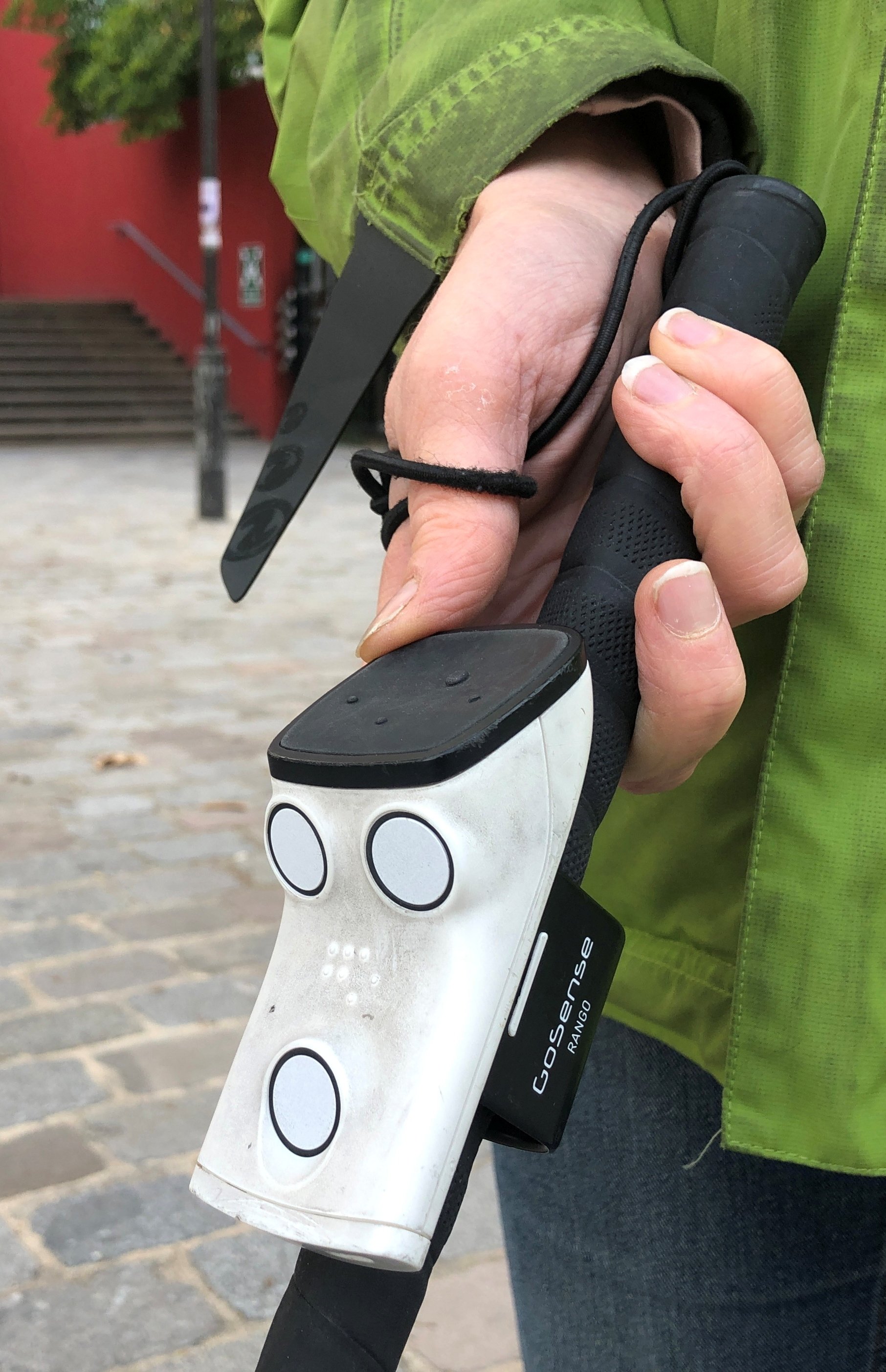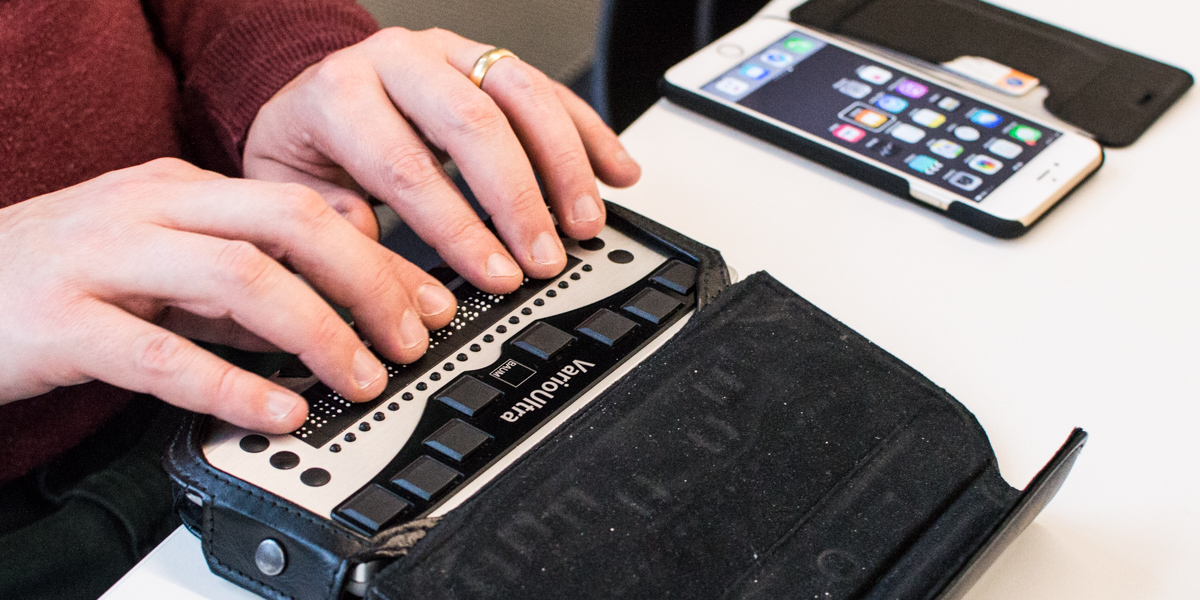Screen Readers for the Blind: Essential Devices for Digital Access
Wiki Article
Discover Ingenious Tools Developed for the Aesthetically Impaired
The growth of cutting-edge devices for the visually damaged represents a significant development in accessibility and independence. Technologies such as wise glasses with AI capacities and mobile applications developed to supply acoustic descriptions are improving daily experiences for users.Smart Glasses for Navigation

Smart glasses created for navigation are transforming the means visually damaged individuals interact with their environment. These innovative devices utilize a mix of camera innovation, fabricated knowledge, and acoustic responses to offer real-time details concerning surroundings. By employing barrier discovery systems, clever glasses can alert customers to prospective dangers, enabling more secure flexibility in both acquainted and strange setups.
The combination of GPS modern technology further boosts navigation abilities, permitting individuals to obtain auditory instructions as they relocate. This hands-free method not just cultivates independence however also encourages visually damaged people to navigate city landscapes with boosted confidence. In addition, several wise glasses are outfitted with functions that identify sites and road indicators, supplying contextual information that improves the customer experience.
Additionally, the development of these devices is constantly advancing, with companies functioning to improve the precision of item recognition and expand the variety of navigational attributes. As clever glasses end up being a lot more obtainable and budget friendly, they hold the potential to considerably transform day-to-day live for visually damaged users. Inevitably, these cutting-edge tools stand for a critical action towards inclusivity, offering boosted mobility and a better feeling of autonomy for individuals browsing the globe around them.

Mobile Application for Daily Living
Exactly how can mobile applications boost the day-to-days live of aesthetically damaged individuals? Mobile apps are changing the way visually impaired customers browse their settings, manage day-to-day jobs, and gain access to info. These applications provide important support through different capabilities, cultivating self-reliance and enhancing high quality of life.A number of cutting-edge mobile apps are developed especially for everyday living. For circumstances, applications like Be My Eyes connect aesthetically damaged users with sighted volunteers using video calls, enabling them to get real-time help with tasks such as reading labels or navigating strange rooms. Seeing AI, established by Microsoft, utilizes artificial intelligence to explain environments, reviewed text, and identify things, properly transforming a smart device into an effective device for everyday help.
In addition, navigation apps tailored for the visually impaired, such as Aira and BlindSquare, offer audio-based instructions and environmental info, allowing individuals to traverse their surroundings securely and confidently. Beyond navigation and immediate support, mobile apps additionally sustain company and task administration, with functions that help individuals set pointers, develop to-do listings, and track visits. In summary, mobile applications function as essential resources, encouraging aesthetically damaged individuals to lead even more independent and fulfilling lives.
Wearable Technologies for Help
Empowerment through innovation is significantly noticeable in the realm of wearable gadgets designed to help visually impaired people. These cutting-edge tools incorporate perfectly right into day-to-day live, boosting navigation and offering vital feedback to customers. For circumstances, wise glasses geared up with cameras can acknowledge faces and review message aloud, allowing individuals to connect more confidently in social and professional setups.Another notable innovation is the use of haptic comments systems in wearable gadgets. These systems make use of resonances or other tactile signals to share information regarding the customer's atmosphere, such as obstacles or adjustments in terrain, improving wheelchair and security. Wearable modern technologies also include wristbands that connect to smart devices, informing users to alerts with refined resonances, thus boosting connection without reliance on visual hints.
As these technologies proceed to progress, they are not only boosting self-reliance for visually damaged individuals yet additionally cultivating a higher sense of inclusion in society. By linking the void between obstacles faced in everyday living and the potential for autonomy, wearable modern technologies offer as critical tools in the quest for equality and empowerment for those with aesthetic impairments.
Sound Description Tools
Sound description devices play a crucial role in boosting access for aesthetically impaired people, giving them with the capability to engage with visual media. Wearable technology for low vision. Going Here These tools provide narrated descriptions of key visual aspects in films, tv programs, and live efficiencies, making sure that individuals can totally understand the context and feelings communicated with visualsAudio summary can be integrated into different systems, including streaming services, cinema screenings, and live movie theater. Numerous prominent streaming services now include audio summary as an access feature, allowing audiences to pick it conveniently. In enhancement to mainstream media, specialized apps likewise exist, offering audio descriptions for art events, galleries, and various other cultural events.
The performance of audio summary hinges on the skill of the storytellers, that have to convey visual information succinctly without diminishing the original sound. Innovations in this area are likewise leading the way for even more personalized experiences, where users can change the degree of detail and pacing according to their preferences.
Braille Innovations and Instruments
Braille gadgets and developments have significantly changed the way visually impaired people communicate with text and info. Modern developments have actually led to the growth of flexible devices that improve proficiency and freedom amongst individuals. Especially, Braille present technologies have developed, enabling dynamic analysis experiences. These devices transform digital text right into Braille, making it possible for individuals to access a large variety of details on computer systems, smartphones, and tablet computers.
Moreover, portable Braille notetakers incorporate conventional Braille input with modern-day capabilities, facilitating note-taking, organizing, and paper editing and enhancing on the go. Braille displays and notetakers. These compact tools usually feature text-to-speech abilities, bridging the gap between Braille and auditory details
Furthermore, innovative Braille printers have emerged, allowing users to generate Braille labels, papers, and academic materials successfully. This access cultivates higher engagement in academic and expert environments, inevitably advertising inclusivity.
Additionally, research right into clever Braille modern technologies remains to broaden. Devices that integrate artificial knowledge are being explored to give real-time navigating assistance and contextual information, improving the individual experience in diverse settings. Generally, these developments mirror a dedication to encouraging aesthetically impaired individuals with technology, click this ensuring they can easily gain access to and engage with the world around them.

Final Thought
The improvement of cutting-edge tools for the aesthetically impaired dramatically improves freedom and quality of life. These modern technologies not just foster higher addition yet also promote freedom in daily tasks, eventually adding to an extra easily accessible and fair society for aesthetically damaged people.As clever glasses become much more budget friendly and available, they hold the possible to considerably transform day-to-day life for aesthetically impaired customers. Mobile applications are changing the means visually damaged individuals navigate their atmospheres, handle everyday tasks, and access details. Applications like Be My Eyes link visually damaged users with sighted volunteers using video clip phone calls, enabling them to get real-time assistance with jobs such as checking out tags or browsing strange spaces.In addition, navigation apps customized for the aesthetically impaired, such as Aira and BlindSquare, supply audio-based directions and environmental information, enabling individuals to traverse their environments safely and with confidence.The improvement of innovative tools for the visit this website visually impaired considerably enhances freedom and high quality of life.
Report this wiki page